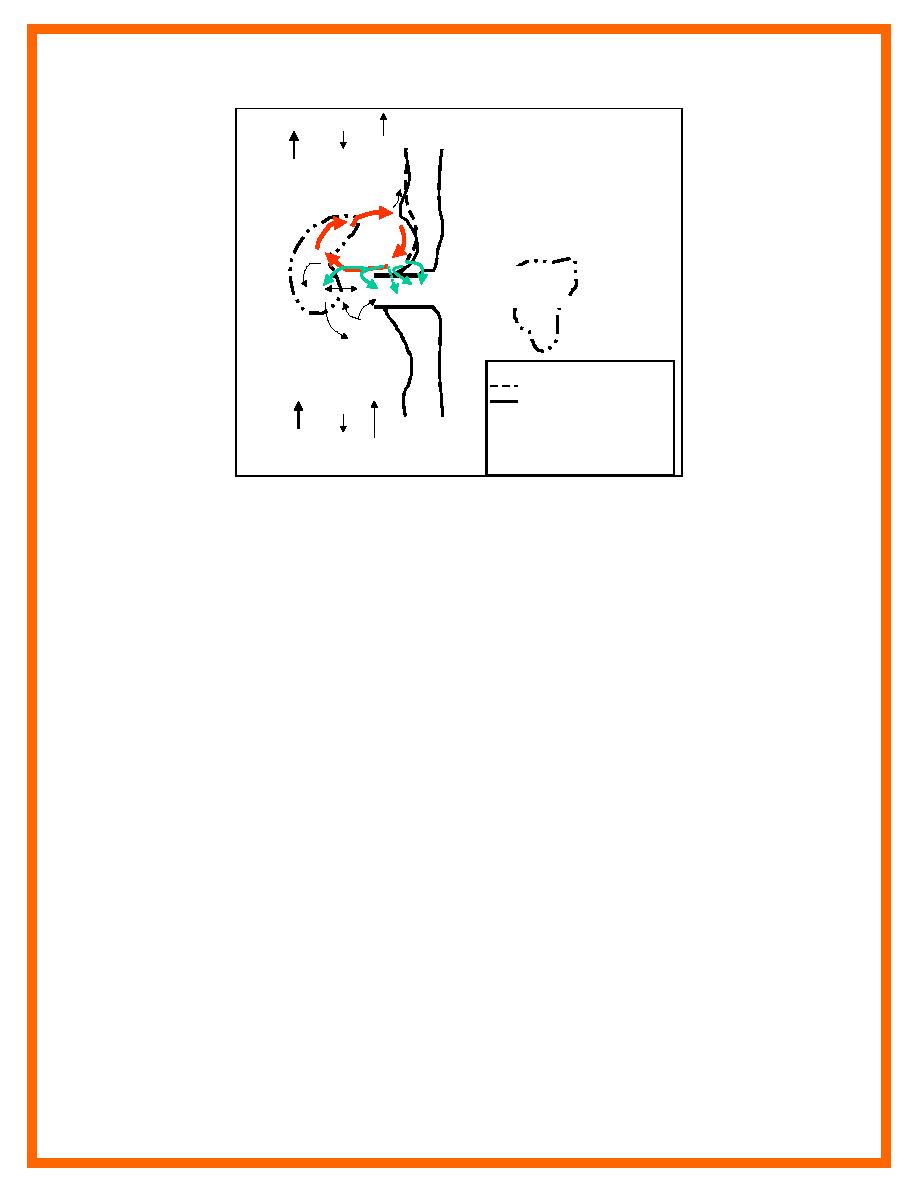
ERDC/CHL TN IV-22
March 2000
QL
QR
Qnet
Reversal in LST rate
symptomatic of downdrift
erosion
Ebb
Mechanisms of
Flood Shoal
Shoal
transport via jetty
Legend:
Initial Shoreline Position
QL
Final Shoreline Position
QL Left-directed LST Rate
Qnet
QR
QR Right-directed LST Rate
Qnet Net LST Rate
Figure 1. Schematic of longshore sand transport patterns in the
vicinity of an inlet, with sediment patterns highlighted (transport
via jetty (green); down-drift reversal in the net longshore sand
transport (red))
Some situations resulting in increased channel shoaling rates can be anticipated and planned for
on engineering time scales (years to decades) through analysis of data (e.g., channel infilling). It
is advantageous to plan proactively for the increased shoaling to avoid a time delay in correcting
the situation, increased effort in obtaining emergency funding, and hazardous navigation
conditions over an extended period. For example, consider two adjacent inlets sharing a common
bay. Suppose that Inlet A is dredged deeper than previously and begins to capture more of the
bay's tidal prism, thereby causing Inlet B to tend towards shoaling and eventual closure. The
increased shoaling of Inlet B can be anticipated and increased dredging planned. An example of
this phenomenon is found along the Gulf coast of Texas, where an inlet (Matagorda Ship
Channel Inlet A in the example) was cut in the early 1960s for more reliable navigation. The
ship channel has captured more and more of the tidal prism while scouring. Over time, capture of
the flow at the ship channel has caused the adjacent natural inlet, Pass Cavallo (Inlet B) to
narrow and tend towards closure.
Another example of a foreseeable increase in shoaling is the placement of beach fill updrift of an
inlet. Prior to fill placement, the updrift beach may have been eroded with longshore sediment-
transport rates less than the potential rate because of adjustment in shoreline orientation to the
predominant waves. The beach fill allows the potential longshore sediment-transport rate to be
realized, increasing deposition in the channel. After initial cross-shore and end-boundary
adjustments of the fill, net longshore transport will move the fill towards the inlet. In the absence
of a mechanical sand bypassing plant or sand backpassing, some fraction of the beach fill can be
expected to deposit in the inlet channel and tidal delta system. Anticipation of the increased
channel shoaling will lay the groundwork for maintaining channel navigability in a timely
2


 Previous Page
Previous Page
